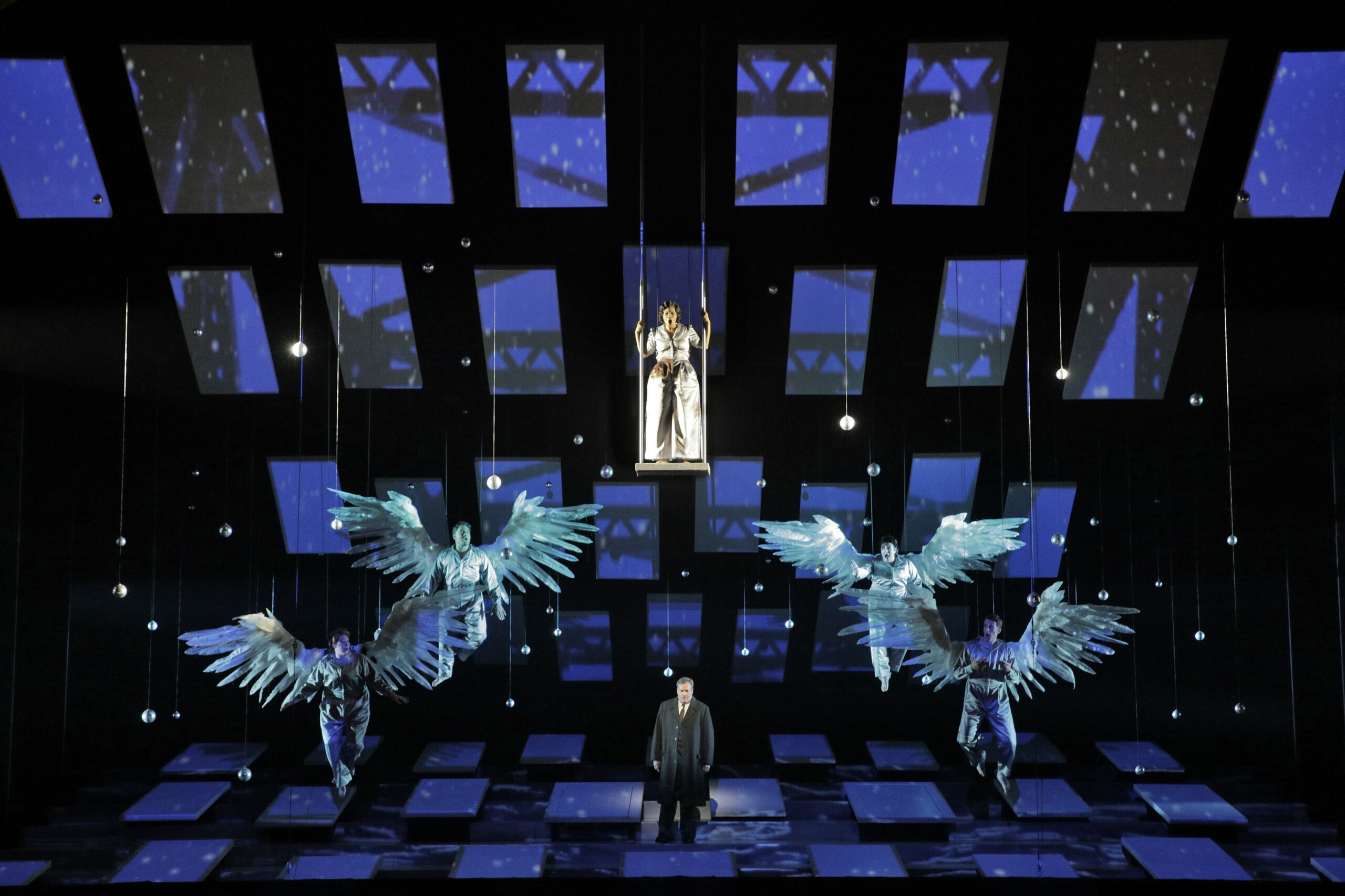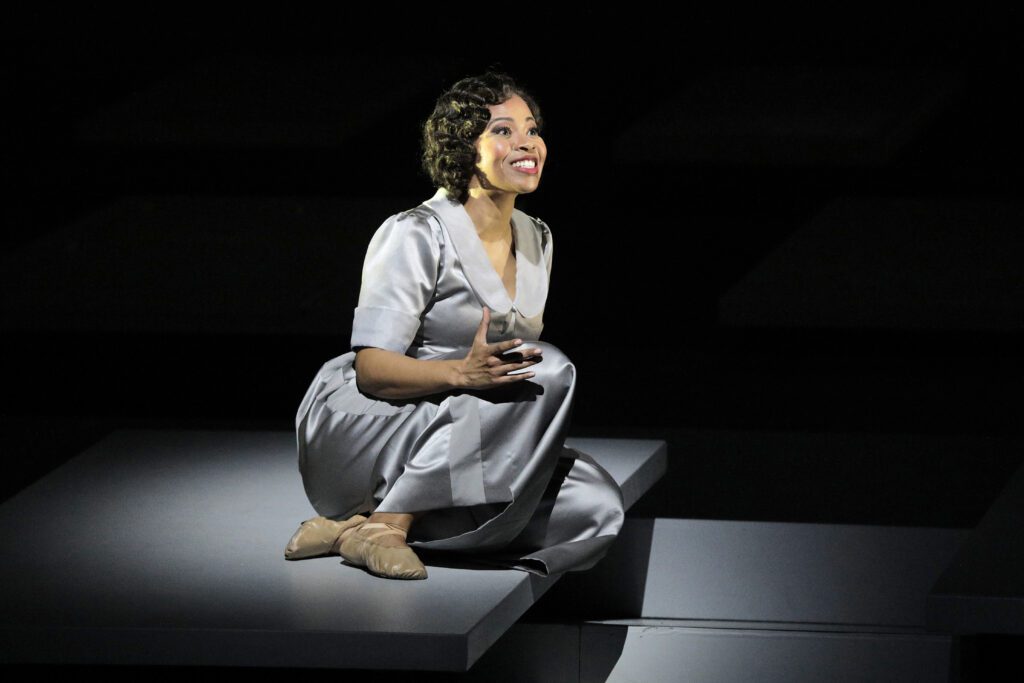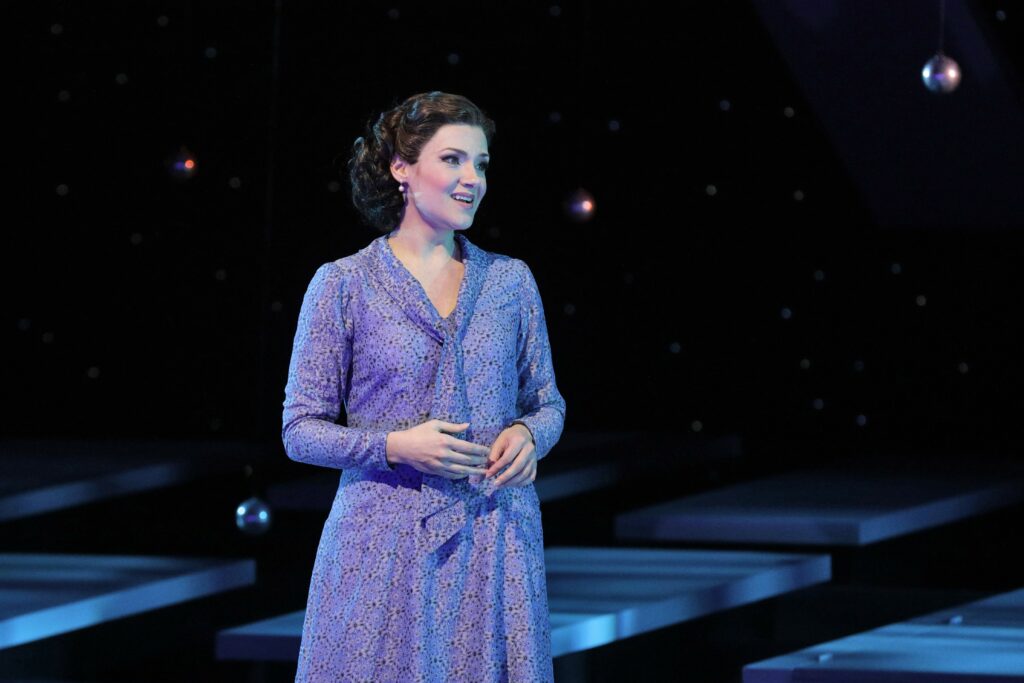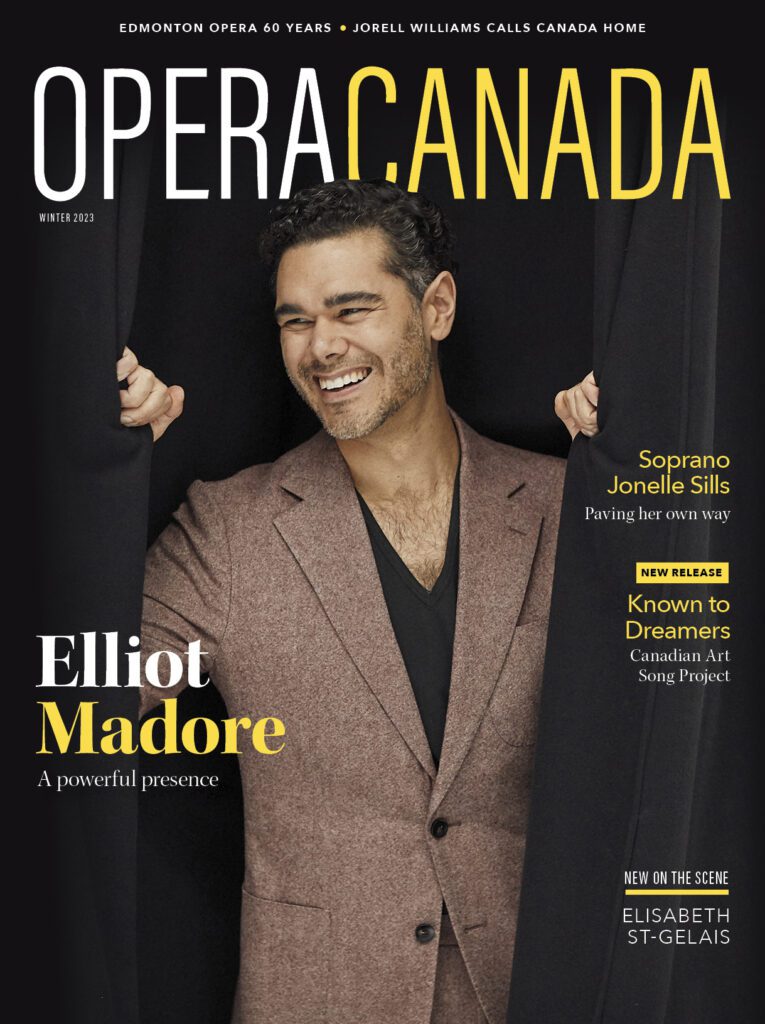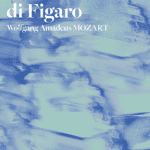San Francisco Opera’s It’s a Wonderful Life (seen Nov. 20th), Jake Heggie’s latest work for the operatic stage, might be called a musical—and he would not object. He declares that he has been writing them for years. Still, his prior successes with Dead Man Walking (2000) and Moby Dick (2012) were operas on profound themes, even if with accessible music.
Heggie and his librettist Gene Scheer have given It’s a Wonderful Life a deep overhaul since the 2016 Houston premiere, bringing it still closer to Broadway, with, for instance, a festive opening fanfare and a finale of chimes based on the Westminster Quarter (famous in sound if not in name).
This piece was specifically commissioned by Houston for the holiday season to appeal to a family audience. It ends, as does Frank Capra’s film, with a chorus on the words, “No one is a failure who has friends,” along with an audience sing-along to “Auld Lang Syne.” Everyone loved it. There were tears.
Angels sporting abundant wings frame the staging. Canadian soprano Sarah Cambidge, with radiant smile and opulent vocal tone, shines with the quartet of Angels First Class who back up Clara, the aspiring spirit who guides the entire action like a puppeteer. In the end, Clara gains First Class wings for saving our hero George Bailey from despair (and for reinforcing the core American home town values of Bedford Falls, New York). Her omnipresence could turn dull and oppressive, but sparkling South African soprano Golda Schultz brought plenty of charm to this angel.
For Heggie, as for Capra, a meaningful life improves the lives of others, as does George with the family homes built by his savings and loan bank. Too bad the opera conveys this truth secondarily, via Clara’s narration more than enacting it musically through George. William Burden brings his splendid tenor and fine acting to the job, but we must love George—as we do James Stewart in the film. Missing is the operatic magic to conjure that love.
Heggie excels at lovely ariosos (short melodies that don’t quite break into full arias) that hover between recitative and aria. Buoyed on by his arioso writing, Heggie manages to soar over the boundless deserts of accompanied recitative on which so many contemporary operas die. His touching duets for George and his girlfriend Mary lie largely in arioso— first when he claims to lasso the moon for her and then, when Mary proposes marriage.
Too often, although Scheer cut numerous characters from Capra’s complex film, exposition takes over and temporal openings for arioso vanish. Dullness follows, not least during Clara’s replay of Bedford Falls without George, which she offers using only spoken word. Nor could Scheer cut the fluttering Uncle Billy (the charming Keith Jameson) as the plot requires him to misplace $8,000 of bank money—the trigger that pushes George to nearly leap into icy water. Similarly, the villainous opposing banker Mr. Potter must personify capitalist greed. With a more dramatically-attuned score, the superb Rod Gilfry could have put the devil in this role (like Lionel Barrymore in the film).
Large exceptions to the demands of exposition—telling not showing—lie with the lively angel Clara and with the essential Mary, George’s childhood playmate. To George’s amazement, she loves and marries him. Heggie supplies her with arching melodic lines. Canadian soprano Andriana Chuchman seizes these gifts, which shine in the flow of her evenly calibrated, tonally lovely voice. She lights up the stage with her evocative phrasing, and superb legato line.
Canadian Joshua Hopkins captures Harry’s easy-going charm with a smooth, graceful baritone, and gracious acting. And he actually can dance the silly Mekee-Mekee ballroom routine that mars this opera with its numerous repetitions. Harry’s very public success—college, marriage, escape from Bedford Falls, the Congressional medal of honour in WWII—contrasts with George’s many private acts of kindness, which label him a hero to the very townspeople he hoped flee. He learns that his central, spiritual place in Bedford Falls easily ranks with medals.
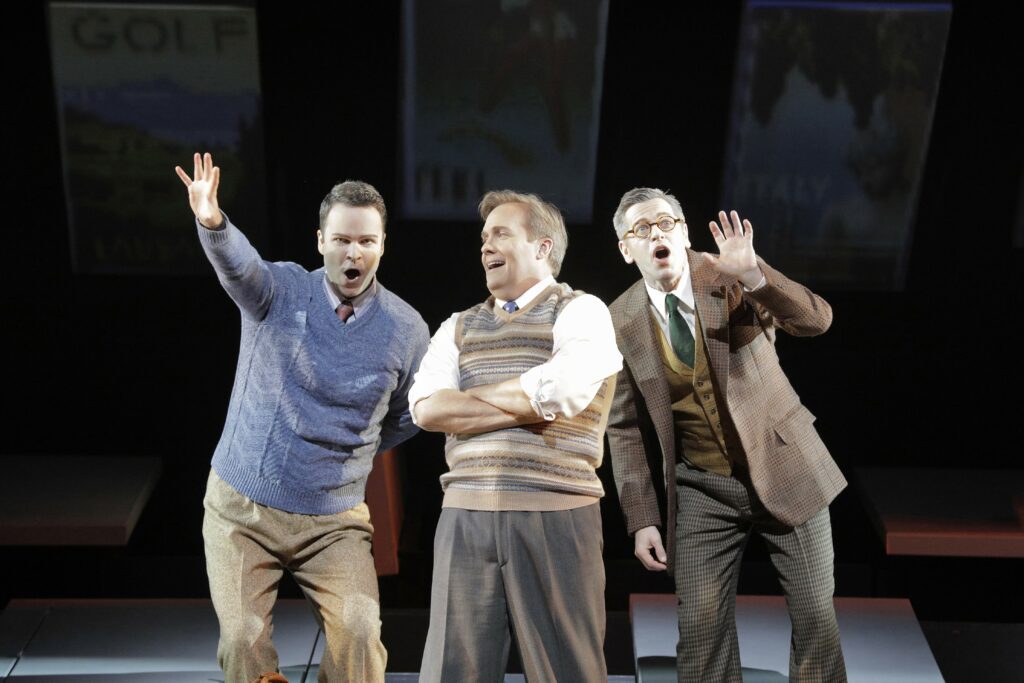
L-R: Joshua Hopkins (Harry Bailey), William Burden (George Bailey) and Keith Jameson (Uncle Billy Bailey) in San Francisco Opera’s It’s a Wonderful Life. Photo: Cory Weaver
Leonard Foglia’s lively stage direction struggles more or less successfully with the absurdly awkward unit set by Robert Brill. Clara brings George to an attic with countless doors, each of which is said to open onto a moment in his life. The stage is filled with about 25 large doors that lie flat and force the action into narrow channels between them, or into leaps across them. Surely in future productions, more elegant solutions will emerge—ones that match David C. Wollard’s colorful period costumes.
Patrick Summers, who previously conducted It’s a Wonderful Life for Houston Grand Opera, led the fine San Francisco Opera Orchestra through Heggie’s brightly luminous instrumental textures. The many varied dimensions of this flawed work will propel it to success, perhaps with still further revision to come.

